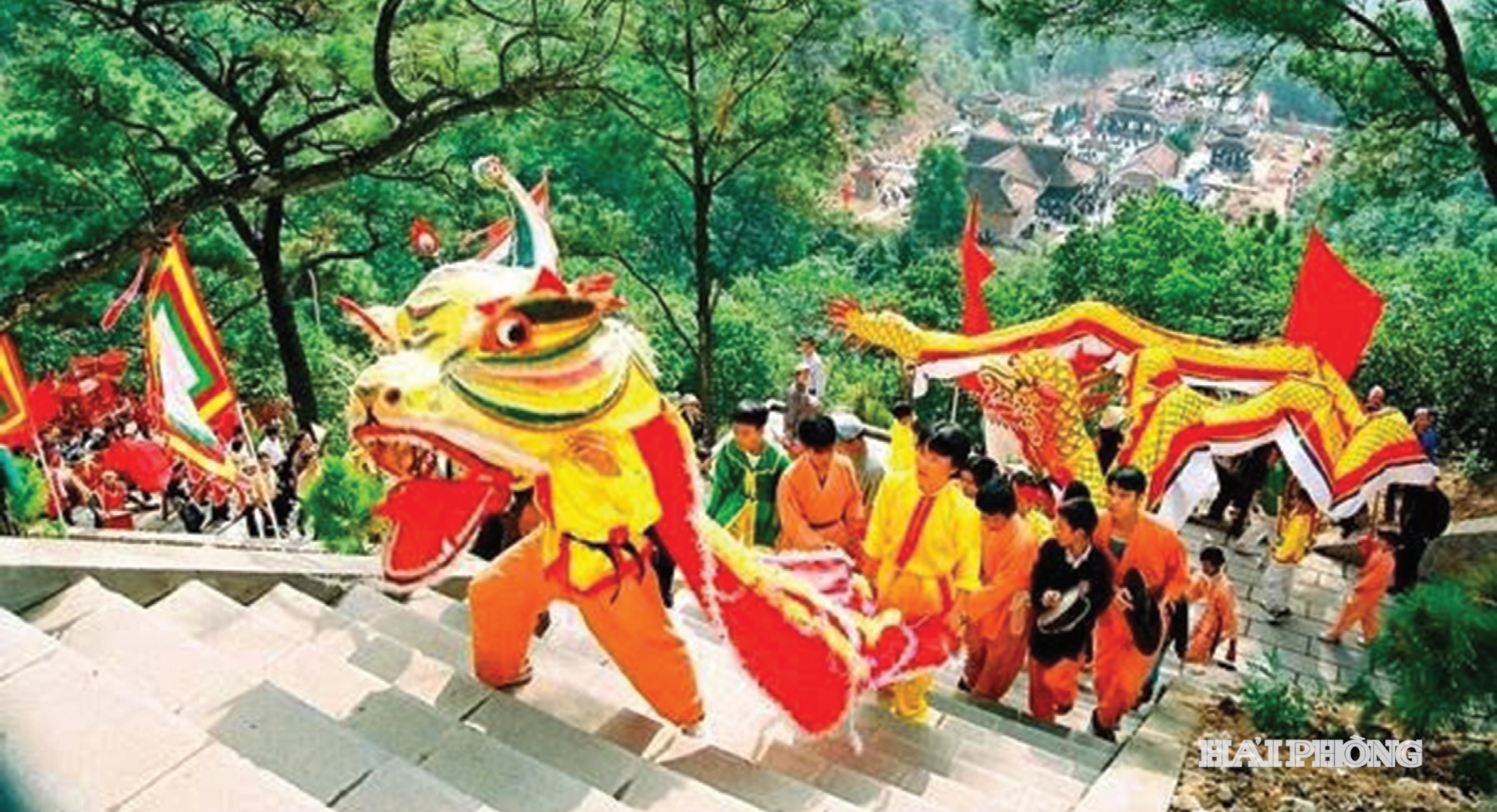Hai Phong is a coastal city rich in cultural and historical identity. After merging with Hai Duong province, a heroic land blessed with extraordinary people, Hai Phong’s cultural capital has become even more abundant, turning into an invaluable asset that needs to be preserved and promoted.

One of the most diverse heritage systems
Hai Phong is among the few localities in Vietnam that own one of the most diverse heritage systems, from majestic nature and cultural-historical relics to unique intangible values recognized by UNESCO. This richness gives Hai Phong a special position on the heritage map of both Vietnam and the world.
First to be mentioned is the Cat Ba archipelago, part of the Ha Long Bay – Cat Ba Archipelago World Natural Heritage Site. With hundreds of large and small islands and a rich forest–marine ecosystem, Cat Ba is a typical example of biodiversity and magnificent natural landscapes. UNESCO’s recognition of Cat Ba affirms the global value of this archipelago and places Hai Phong among the rare localities that possess both sea–island and world heritage sites.
If Cat Ba is the pride of nature, then the relics belonging to the Yen Tu – Vinh Nghiem – Con Son, Kiep Bac relic and scenic complex add cultural depth to Hai Phong. These include Con Son pagoda, Kiep Bac temple, Thanh Mai pagoda, Nham Duong pagoda, and Kinh Chu grotto.
These works not only reflect the development of Truc Lam Buddhism and the humanistic philosophy of Dai Viet (former name of Vietnam), but are also testimonies of the nation’s history of founding and defending the country. From pagoda architecture and caves to festive spaces, all reflect the close bond between humans and nature, between beliefs and social life.
Not stopping at nature and tangible heritage, Hai Phong also owns two intangible cultural heritage pieces recognized by UNESCO, namely ca tru – a scholarly art form combining music, poetry, and performance, and the practice of worshiping the Mother Goddesses of the Three Realms – a folk belief expressing aspirations for health, prosperity, and peace.
“Being recognized and honored by UNESCO with two world heritage pieces opens up a new chapter of development for Hai Phong’s heritage. It is also an opportunity to widely promote the heritage to friends at home and abroad,” said Vu Dinh Tien, Deputy Director of the city Department of Culture, Sports and Tourism.
In harmony with the times

In the flow of international integration, preserving and promoting heritage values is not only the responsibility of management agencies and local authorities but, more importantly, the shared effort of the entire community. In recent years, Hai Phong has done this well.
Regarding the Cat Ba archipelago, the city is focusing on implementing conservation planning linked with sustainable development, prioritizing the protection of mangrove ecosystems, coral reefs, and primeval forests, while strictly controlling tourism activities. Scientific research programs, eco-tourism, and environmental education have been carried out to ensure both rational exploitation and preservation of habitats for rare species.
As for the five world cultural relics, Hai Phong attaches importance to restoration and embellishment in accordance with international standards, while reviving festivals associated with the relics to bring new vitality to cultural–spiritual spaces. Building digital databases of relics, organizing seminars and exhibitions are also ways to promote heritage values to domestic and international audiences.
At the same time, intangible heritage such as ca tru and the Mother Goddess worship practice are maintained through clubs, performance programs, and school-based education.
Hai Phong is also one of the few localities that still maintain five professional art troupes: cheo (traditional operetta), cai luong (reformed opera), spoken drama, puppetry, and music–dance – proof of the enduring connection between heritage and contemporary art life.
“The heritage existing in Hai Phong today is an opportunity to turn its value into a resource, a special asset that can be utilized and promoted, contributing positively to the city’s socio-economic development,” said Vu Dinh Tien.
With this experience, Hai Phong’s world heritage sites have been being effectively preserved and promoted, so that heritage can truly “live” alongside the times.
TAM PHUC